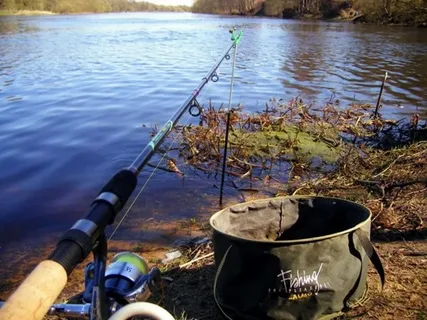When we think of fish, we often imagine the brightly colored species that swim near the surface of the water. But there’s an entire group of fish that thrive beneath the surface, playing a crucial role in maintaining the health of aquatic environments. These are bottom feeder fish—the unsung heroes of our oceans, rivers, and lakes. At Spotlightus, we’re diving deep into the world of bottom feeder fish to explore their unique characteristics, benefits, and importance in the ecosystem.
What Are Bottom Feeder Fish?
Bottom feeder fish are species that live and feed along the bottom of aquatic environments such as oceans, rivers, lakes, and ponds. They are adapted to search for food on the substrate, which can include mud, sand, rocks, and plant matter. These fish are often equipped with specialized mouthparts, like flat or sucker-shaped mouths, that allow them to efficiently forage for food at the bottom.
Some common bottom feeder fish include:
- Catfish: Known for their whisker-like barbels that help them detect food.
- Carp: Often found in freshwater environments, known for scavenging along the riverbed.
- Suckerfish: Characterized by their sucker-like mouths, often seen clinging to rocks or other surfaces.
- Plecostomus: Commonly kept in aquariums, these fish help keep tanks clean by consuming algae.
- Eels: Often found burrowed in the sand, they feed on detritus and small invertebrates.
The Importance of Bottom Feeder Fish
Bottom feeder fish play a vital role in maintaining the balance of aquatic ecosystems. Here’s why they are so important:
1. Cleaning the Environment
One of the primary functions of bottom feeder fish is their role in cleaning. They consume organic material like dead plants, animals, and other debris that settle at the bottom. This scavenging helps prevent the accumulation of waste, ensuring that water remains clean and oxygenated.
2. Nutrient Recycling
As they feed on detritus, bottom feeders contribute to the nutrient cycle. Their digestion breaks down organic material, turning it into nutrients that can be used by other organisms, such as plants and microorganisms. This process is essential for sustaining the overall health of the ecosystem.
3. Food Source for Other Species
Bottom feeders themselves become a food source for a variety of predators. Larger fish, birds, and even mammals depend on them for sustenance, making bottom feeders a crucial part of the food chain.
4. Maintaining Water Quality
By feeding on algae, debris, and excess food, bottom feeder fish help to keep water quality in check. In aquariums, they play a similar role by cleaning up uneaten food and algae, preventing toxic build-ups and maintaining a healthier environment for all tank inhabitants.
Popular Bottom Feeder Fish Species
If you’re interested in adding bottom feeder fish to your aquarium or simply want to learn more about these fascinating creatures, here are some popular species to explore:
- Catfish: There are many species of catfish that serve as bottom feeders. Their barbels help them locate food in murky water, making them excellent scavengers.
- Plecostomus (Pleco): These fish are popular in home aquariums for their algae-eating abilities. They are peaceful and excellent at keeping tanks clean.
- Siamese Algae Eater: Known for their ability to consume algae, they are ideal for maintaining a clean aquarium environment.
- Corydoras Catfish: Small and peaceful, these catfish are often found in freshwater tanks, helping to clean up the substrate.
- Rainbow Shark: Though not a true bottom feeder, this species spends a lot of time near the substrate, scavenging for food.
Bottom Feeder Fish and Aquariums
If you are considering adding bottom feeder fish to your aquarium, here are some tips to ensure they thrive:
- Tank Size: Ensure that your tank is large enough to accommodate bottom feeders. Some species require more space to swim and scavenge comfortably.
- Substrate: A soft substrate, such as sand, is ideal for many bottom feeders, as it’s easier for them to search for food.
- Companion Species: Choose other peaceful species that won’t disturb the bottom feeders. Some aggressive fish may bully or compete with bottom feeders for food.
- Water Quality: Regular water changes and a good filtration system are important to maintain a healthy environment for bottom feeders and other tank inhabitants.
Conclusion
Bottom feeder fish are an essential and often overlooked part of our aquatic ecosystems. They help maintain water quality, recycle nutrients, and prevent the build-up of waste. Whether in the wild or in home aquariums, these fish play a crucial role in keeping aquatic environments healthy and balanced.
At Spotlightus, we’re passionate about helping you learn more about the wonders of nature, including the unique and valuable bottom feeder fish. So, the next time you dive into the world of aquatic life, remember to appreciate the important role these fish play beneath the surface.
Ready to explore more aquatic creatures and tips for maintaining a healthy aquarium? Visit Spotlightus for more fascinating insights into the world of fish and underwater ecosystems!




